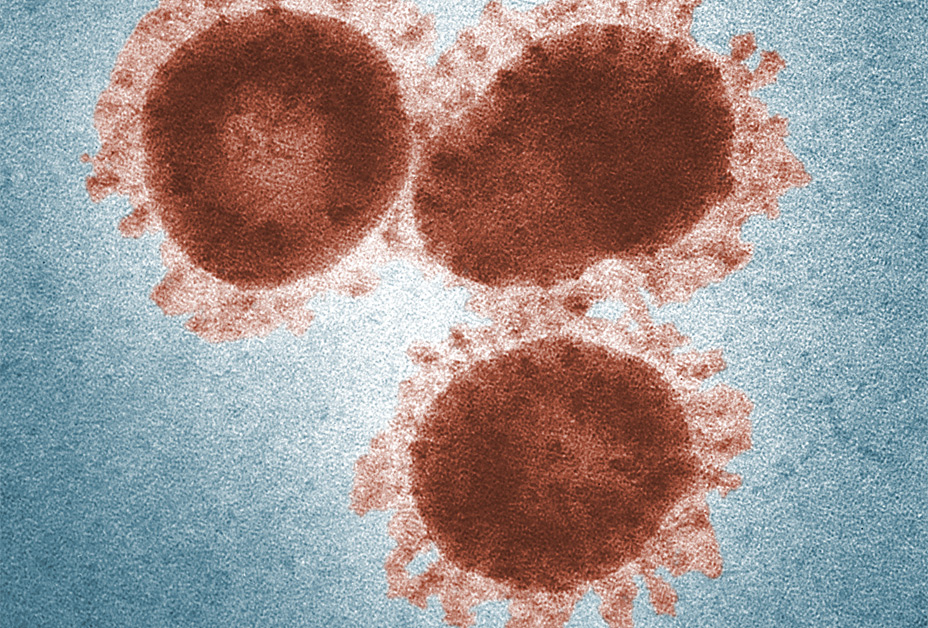In 2002, severe acute respiratory syndrome occurred in Guangdong, China, and spread throughout the world, causing a global epidemic of infectious diseases. The culprit of this incident was SARS-CoV (Severe Acute Respiratory Syndrome Coronavirus). What kind of virus is this? We will briefly introduce it below.
Overview of SARS-CoV
The SARS-CoV coronavirus belongs to the genus Nestiviridae, Coronaviridae, and Coronavirus. It has a diameter of 100 nm, and is a single-stranded positive-strand RNA virus with an envelope. The entire field is 27-30kb, and it is also the largest RNA virus known in the world. The disease caused by the virus has rapid onset, rapid spread, and high mortality. It is mainly transmitted through close-range respiratory droplets, and can infect humans, rats, pigs, birds, etc. The virus can incubate for 2-14 days. The main clinical symptoms of the patient are high fever above 28 °C, accelerated breathing, hypoxia, joint pain, and changes of shadows on the lungs under X-ray, which seriously threaten human health.
 Fig.1 Morphology of Coronavirus particles as seen by electron microscopy
Fig.1 Morphology of Coronavirus particles as seen by electron microscopy
Invasion mechanism of SARS-CoV
SARS coronavirus infection firstly binds to target cell receptors through the virus’s S protein. And the S protein is the main membrane protein of the coronavirus, which is related to the cell fusion caused by the virus and constitutes a protrusion on the virus envelope. The N-terminal part of the protein (S1 domain) is mainly responsible for the virus binding to receptors on the host cell, and the C-terminal part (S2 domain) is involved in cell fusion. The functional receptor of SARS-CoV is angiotensin-converting enzyme 2 (ACE2). When the S protein specifically binds to the ACE2 receptor, the conformation of the S protein changes, which initiates membrane fusion and the virus invades cells. After entering the cell, the virus first translates RNA polymerase, then transcribes its own genome into mRNAs, and then translates other structural proteins. After the translation is complete, the virus enters the endoplasmic reticulum for packaging, and finally enters the Golgi apparatus for processing, and then is ejected out of the cell by budding.
Treatment of SARS-CoV
In the fight against SARS-CoV, the following three strategies have been developed for the new drugs:
- The first strategy is drugs that affect the viral replication, transcription, translation, etc., and affect the viral cycle. Based on the pathogenic mechanism of SARS-CoV, scientists have designed C-short peptides to change the conformation of the S protein to organize the virus and cell fusion steps. In addition, because SARS-CoV transcription is discontinuous, siRNA or other antisense nucleic acid drugs can be used to block the transcription process.
- The second strategy is to modify the host cell membrane receptors to adjust the state of the body and prevent the virus from entering the cells. For example, cell membrane stabilizers may also become drugs for the prevention and treatment of SARS-CoV.
- In addition, testing broad-spectrum antiviral drugs, which use molecular libraries and databases to screen for molecules that may have a therapeutic effect on the virus are some of the methods that will be considered.
The research of SARS-CoV vaccines/antibodies is made mainly through the following dimensions.
- SARS-CoV inactivated viruses can be used to produce vaccines. It is possible that SARS-CoV virus can be inactivated by aldehyde treatment and ultraviolet irradiation, and then β-propiolactone can induce virus neutralizing antibodies in immunized animals. However, the safety of this method needs to be considered, and it is also easy to infect the producer during the production process.
- The S protein in SARS-CoV virus is also the focus of vaccine research. Studies have shown that vaccines expressing the full length of the S protein induce neutralizing antibodies and protect mice from SARS-CoV. However, it is also known that the improved vaccine may still cause liver damage, so its safety and efficacy still need to be considered.
- There is a domain in the S protein that specifically binds to the receptor, and research about such a vaccine containing a neutralizing epitope has also become the focus of research and development. Studies have shown that rabbits and mice immunized with receptor-binding domain (RBD) produce high-titer neutralizing antibodies, and polyclonal antibodies made to recognize different sites of RBD can also block the connection between RBD and ACE2, so RBD is a good candidate for SARS-CoV vaccine.
- The preparation of antibodies to SARS-CoV is mainly based on the structural proteins of the virus in order to serve the diagnosis, treatment, and vaccine preparation of SARS-CoV.
In general, although the SARS-CoV storm has passed, research on its prevention and treatment is still continuing.
Creative Biolabs is a leading service provider covering the entire antibody discovery and development process. We can provide you with coronavirus-related mouse/rabbit/human-derived recombinant antibodies, therapeutic antibodies and other related services to help your coronavirus drug development.
References:
[1] Wu Y S, Lin W H, T.-A. Hsu J, et al. Antiviral Drug Discovery Against SARS-CoV[J]. Current Medicinal Chemistry, 2006, 13(17):2003-2020.
[2] Jiang S, He Y, Liu S. SARS vaccine development[J]. Emerging infectious diseases, 2005, 11(7):1016-1020.
[3] Du L, He Y, Zhou Y, et al. The spike protein of SARS-CoV — a target for vaccine and therapeutic development[J]. NATURE REVIEWS MICROBIOLOGY, 2009, 7(3):226-236.
